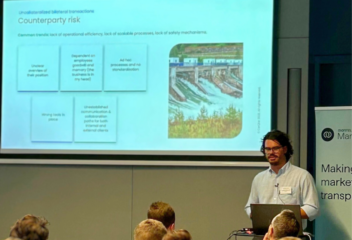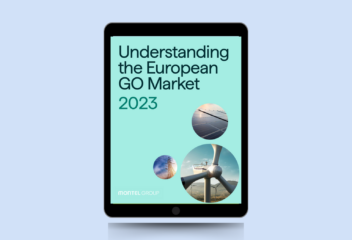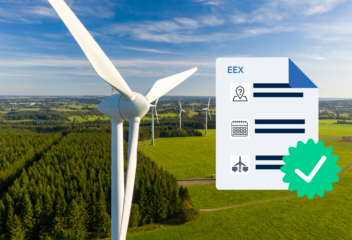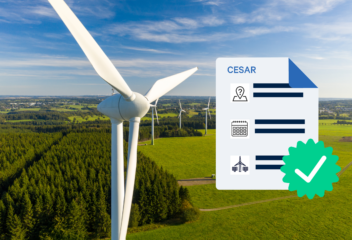Transparency and Accountability- Exploring the Role of Guarantees of Origin in the EUs RED3 Legislation
As the world strives for a sustainable future, renewable energy plays a pivotal role in decarbonizing the energy system. To facilitate the growth of renewable energy sources and ensure transparency in the market, the European Union has introduced the Renewable Energy Directive (RED3) legislation. At the heart of this legislation are Guarantees of Origin (GoOs), a transparent and reliable system for tracking the production and consumption of renewable energy. In this article, we will dive into the significance of GoOs in accelerating the transition to renewable energy and explore the key provisions of the EU’s RED3 legislation.
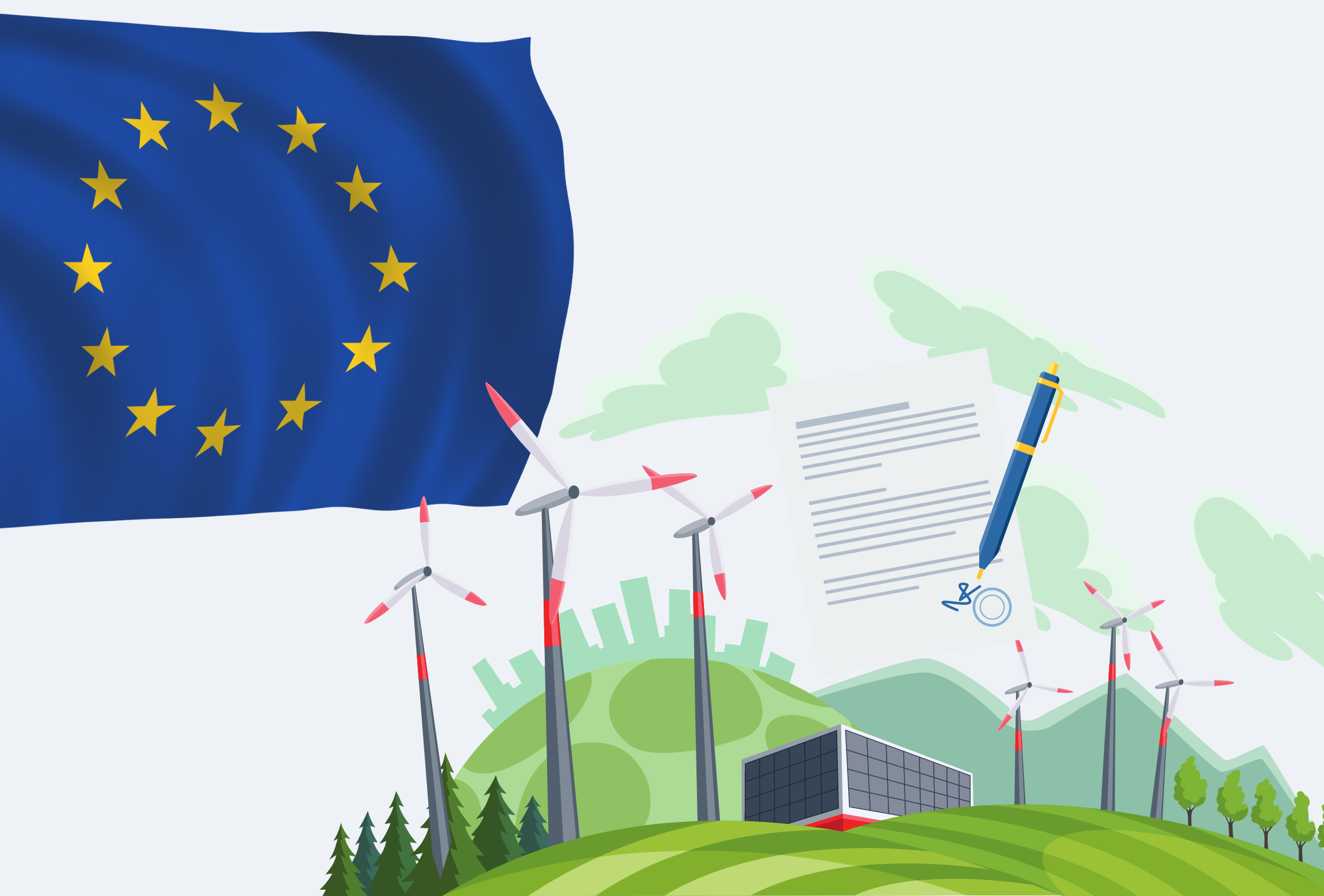
Understanding Guarantees of Origin
GoOs serve as certificates that verify the origin of electricity generated from renewable sources. They provide consumers with valuable information about the source of their energy, enabling them to make informed choices and support renewable energy initiatives. By tracking the production and consumption of renewable energy, GoOs promote transparency and accountability in the energy market. These certificates are instrumental in incentivizing energy suppliers to invest in renewable energy projects, as they can sell GoOs to consumers who seek to offset their carbon footprint or demonstrate their commitment to sustainability.
New to the GoO market? Here’s a guide to understanding guarantees of origin
The key provisions of RED3 Legislation
The Renewable Energy Directive (RED3) is a significant legislative extension to the original RED introduced by the European Union (EU) to accelerate the transition to a low-carbon economy and promote the use of renewable energy sources. It outlines provisions that require member states to increase the share of renewables in their energy mix and reduce greenhouse gas emissions. By setting ambitious goals and establishing a framework for action, RED3 aims to drive the growth of renewable energy and contribute to the EU’s broader energy and climate targets, which have increased significantly in recent years.
One of the fundamental provisions of RED3 requires the use of GoOs to verify the renewable nature of energy sources. By mandating the use of GoOs, RED3 ensures that renewable energy projects can prove the origin of their resources and receive recognition and support. This requirement plays a crucial role in incentivizing further investments in the renewable energy sector by creating market incentives for energy suppliers to prioritize renewable energy generation.
Moreover, the incorporation of GoOs within RED3 provides a robust framework for monitoring progress towards the EU’s energy and climate targets. By accurately tracking the origin and consumption of renewable energy, GoOs enable member states to demonstrate their compliance with the renewable energy goals outlined in RED3. This transparency and accountability ensure that efforts to increase the share of renewable energy in the energy mix are accurately measured and contribute to the overall progress of the EU’s energy transition. The EU’s RED3 legislation sets ambitious goals for the transition to a low-carbon economy. It establishes requirements for member states to increase the share of renewable energy in their energy mix and reduce greenhouse gas emissions.
Despite its many benefits, it’s essential to recognize that there are areas where the legislation exhibits flaws that warrant attention., For instance, some concerns arise from the failure to exclude destructive biomass feedstocks from renewable energy targets and Emissions Trading System (ETS) zero-rating. Additionally, the weakened implementation of the cascading principle and definition of “Industrial Grade Round Wood” undermines their intended effectiveness.
Furthermore, the risk-based approach and reliance on national legislation leave areas vulnerable to exploitation, including old-growth forests. Moreover, the criteria for greenhouse gas savings could be strengthened, and there remains a persistent loophole for outermost regions. Lastly, the review clause lacks a clear commitment to concrete legislative proposals, relying instead on a Commission report that may delay necessary restrictions.
The benefits of using GoOs in the energy transition:
The utilization of Guarantees of Origin brings several benefits to the energy transition, including:
- Transparency and Credibility: GoOs provide transparency and credibility by assuring consumers that the energy they consume comes from renewable sources. This transparency empowers individuals and organizations to actively contribute to the reduction of carbon emissions
- Market Incentives: GoOs create market incentives for energy suppliers to prioritize renewable energy generation. The demand for GoOs drives the growth of the renewable energy market as energy suppliers strive to meet consumer preferences for clean and sustainable energy sources
- International Trading: GoOs enable international trading, allowing countries to collaborate and support each other in achieving their renewable energy targets. This collaboration fosters the exchange of renewable energy certificates and promotes the development of a global renewable energy market.
- Consumer Empowerment: GoOs empower consumers by providing them with the necessary information to make informed choices about their energy consumption. By having access to transparent data on the renewable energy sources they support, consumers can actively contribute to the energy transition and align their values with their energy purchasing decisions.
- Investment in Renewable Energy Projects: The use of GoOs incentivizes energy suppliers and investors to channel funds into renewable energy projects. As the demand for GoOs increases, it creates a market-driven mechanism that encourages the development of new renewable energy infrastructure, leading to increased investments in clean energy technologies.
- Compliance with Renewable Energy Targets: GoOs play a crucial role in helping countries meet their renewable energy targets as set by national and international regulations. By utilizing GoOs, energy suppliers can demonstrate their compliance with these targets and contribute to the overall transition to a low-carbon economy.
- Market Differentiation: The availability of GoOs allows energy suppliers to differentiate themselves in the market by offering renewable energy options to their customers. This differentiation can enhance their brand image and reputation, attracting environmentally conscious consumers and fostering customer loyalty.
The effects of GoO use across Europe
Across the EU, Guarantees of Origin are being used to accelerate the adoption of renewable energy sources. In countries like Spain and Germany, GoOs have facilitated the expansion of renewable energy use, decreasing the demand for traditional energy sources. GoOs have helped encourage the adoption of hydropower, leading to hydropower covering up to 92% of all power generated in the Nordic regions, and allowing the region to export renewable energy to other countries in Europe. Furthermore, GoOs have facilitated cross-border renewable energy trade, enabling countries with abundant renewable resources to export excess energy to those with higher demand.
GoOs play a critical role in creating a renewable future
As the world strives to combat climate change and transition towards a sustainable future, Guarantees of Origin play a vital role in accelerating the adoption of renewable energy sources. The EU’s RED3 legislation has established a robust framework that mandates the use of GoOs, ensuring transparency, accountability, and progress toward ambitious renewable energy targets. By embracing GoOs, we unlock the power of transparent energy tracking, incentivize renewable energy investments, and empower consumers to make sustainable choices. Guarantees of Origin pave the way for a greener and more resilient energy system, setting us on a path toward a carbon-neutral future.
But tracking and maintaining your GoO can be challenging, especially when juggling the shifting trends of a dynamic and quickly growing market. Our platform provides a robust solution for tracking and managing GoOs, ensuring transparency, credibility, and compliance with regulatory requirements. With CerQlar, you can easily navigate the complexities of the renewable energy market, optimize your GoO portfolio, and make informed decisions that align with your sustainability goals.




